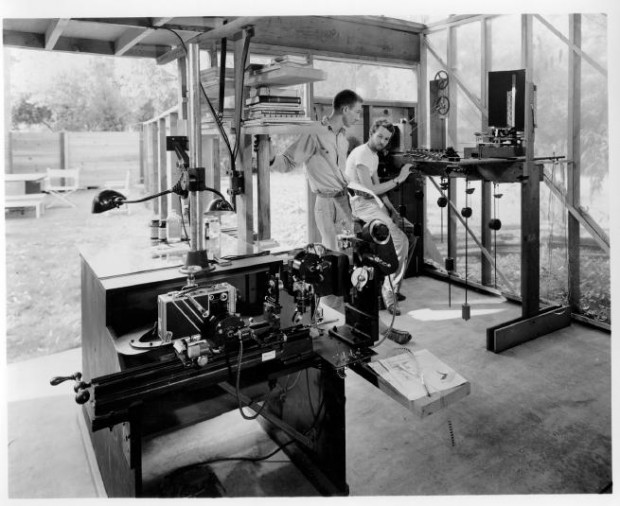Tor.com offers up brothers James and John Whitney’s 1966 short Lapis, heralded as one of the first computer-animated movies, in its splendid Saturday Morning Cartoons series. The Tor post made me curious to learn more.
The Whitneys had been making abstract, expressive animations since the 1940s using painstaking mechanical processes. Lapis used an analog computer developed by John?who with designer Saul Bass created the swirling title sequence for Hitchcock’s Vertigo (1958).
The images in Lapis are photographic; the computer, which employed a mechanical computing device from a WWII antiaircraft fire control mechanism, directed the spinning and filming of James Whitney’s hand-painted imagery. Here are the brothers at work with their apparatus:

John Whitney’s later work, like Arabesque (1972), employed images made by digital computers:
Like the Wright Brothers in aviation, the Whitneys didn’t work in a vacuum; throughout the twentieth century, computer imagery was developed on many fronts (and the swirling abstractions of Marcel Duchamp’s pioneering Anemic Cinema [1926] must be counted an influence). But their techniques influenced the methods of computer animators, and their imagery inspired mainstream directors with its fount of new possibilities.
 Gearfuse Technology, Science, Culture & More
Gearfuse Technology, Science, Culture & More


